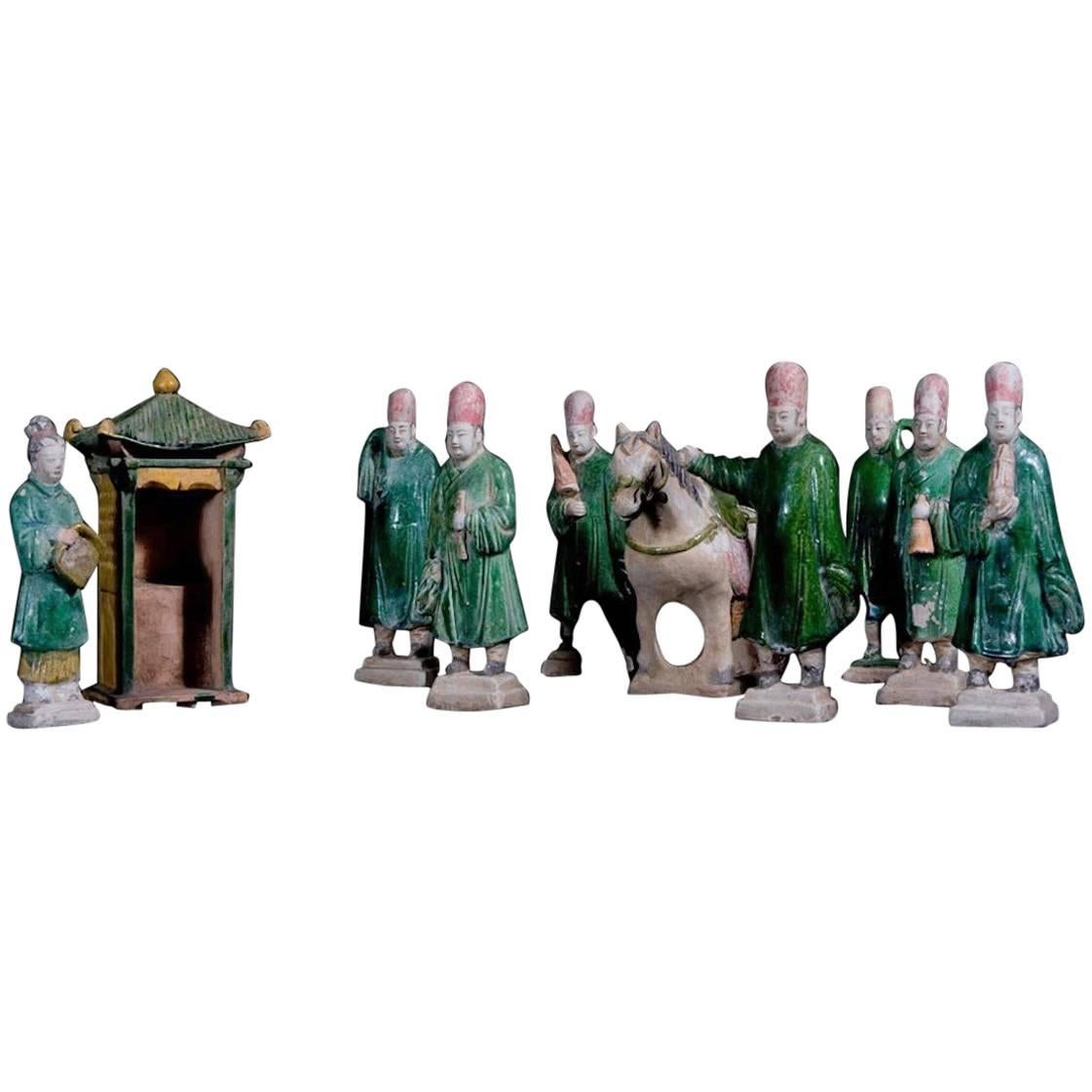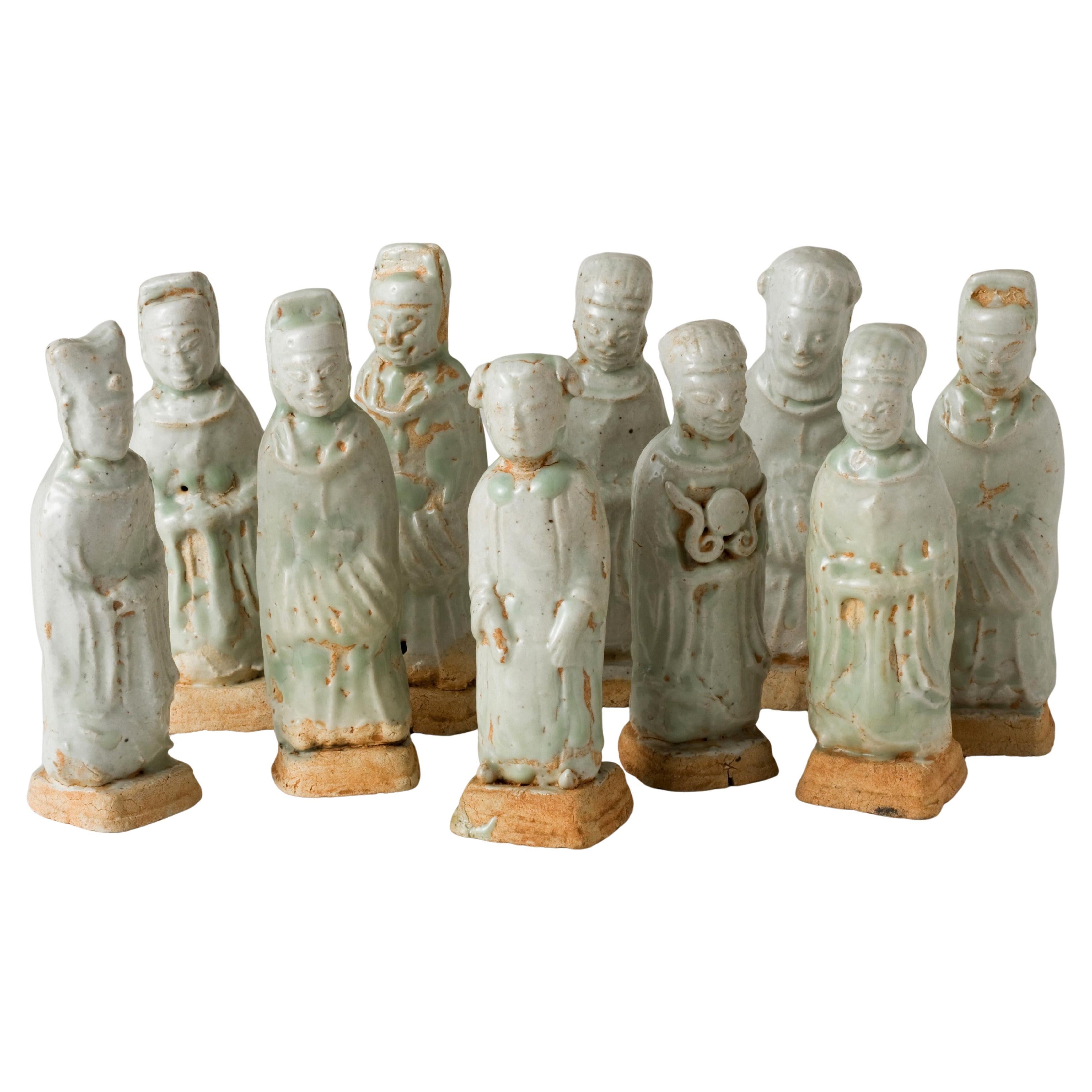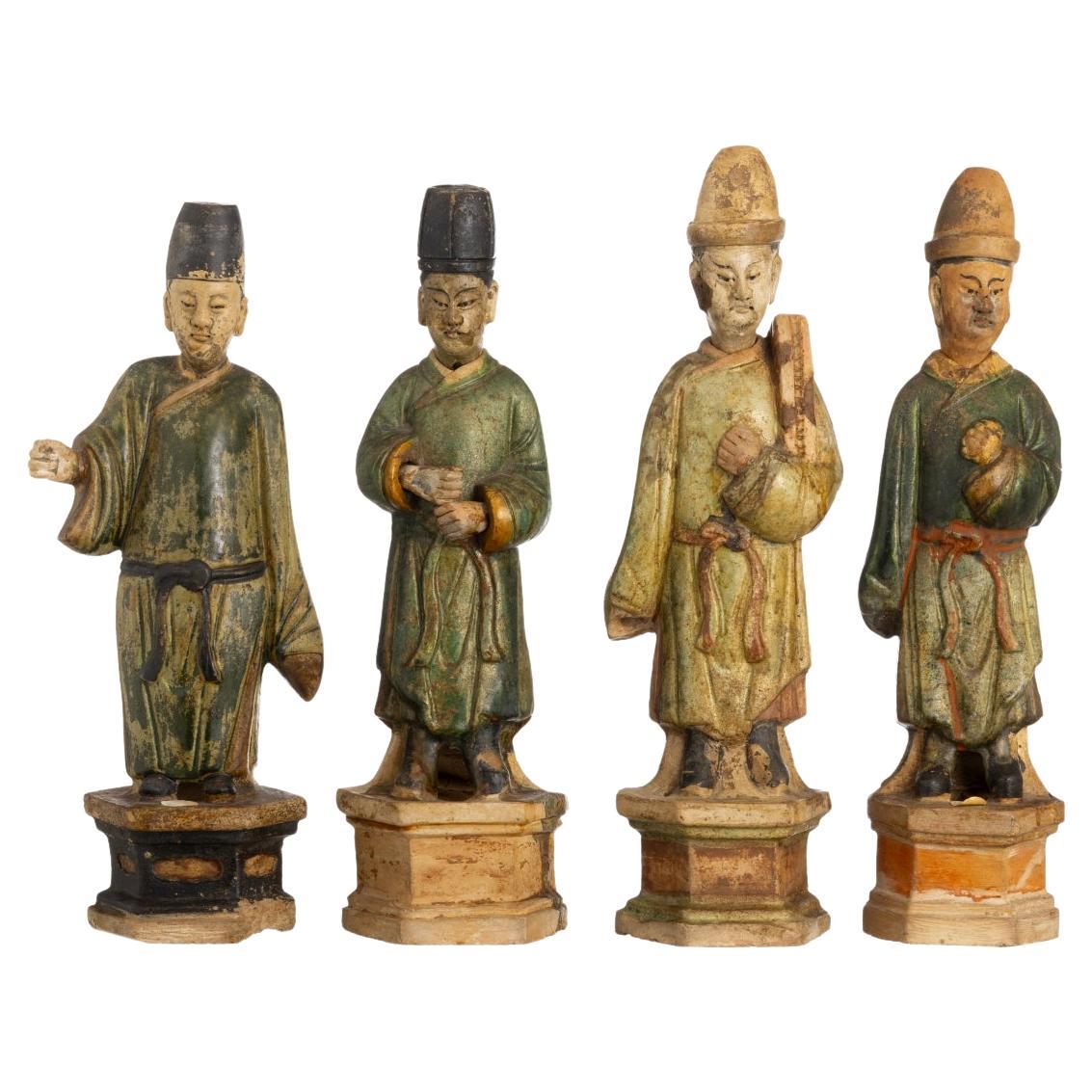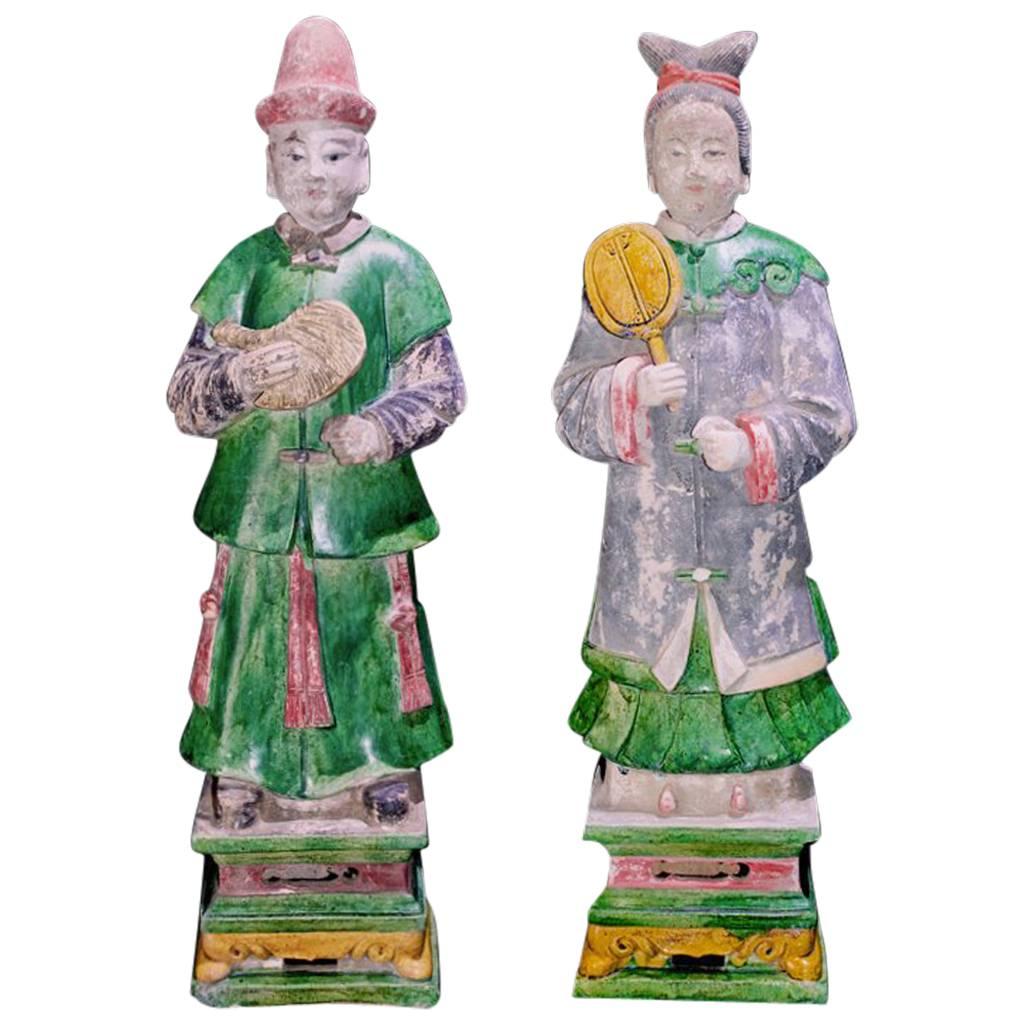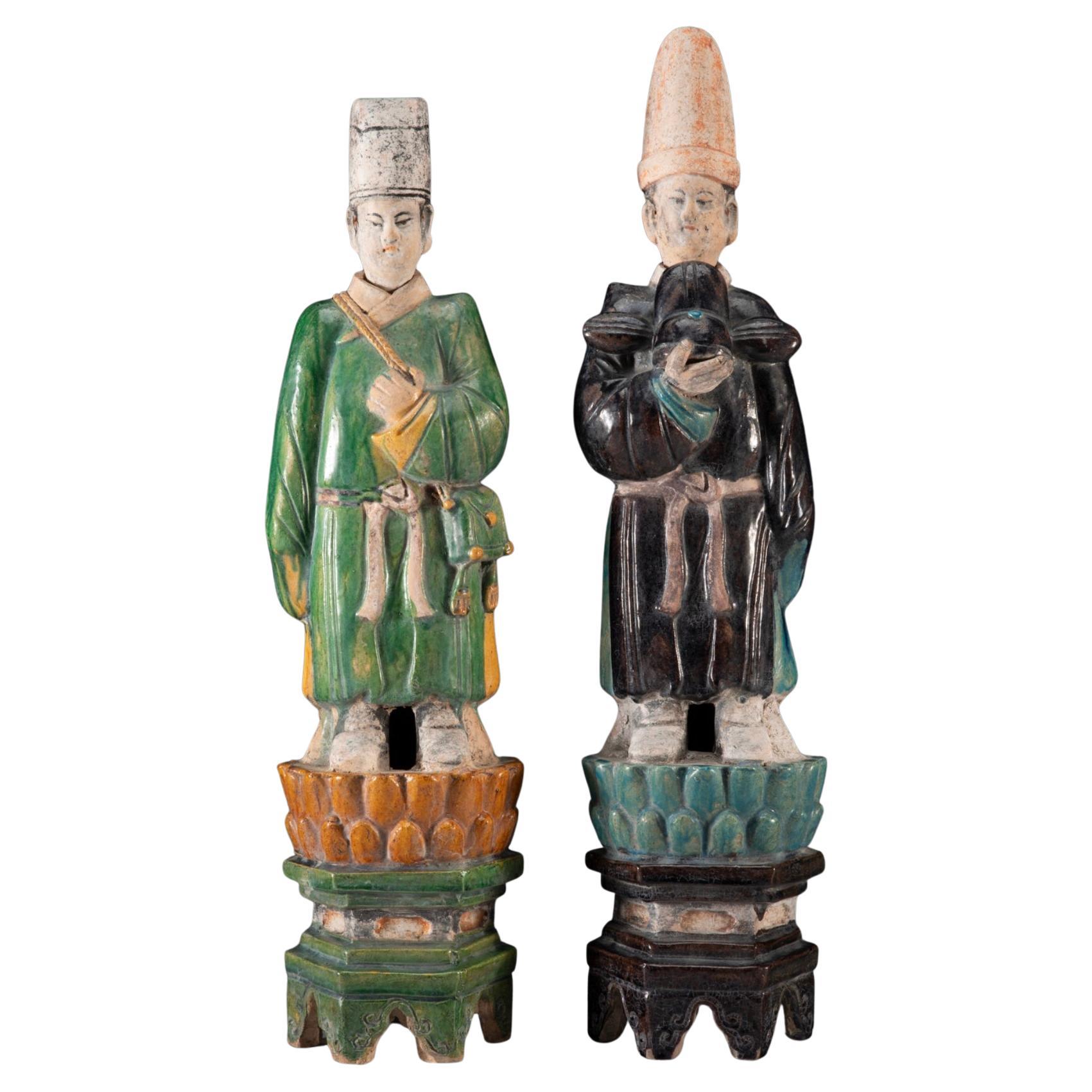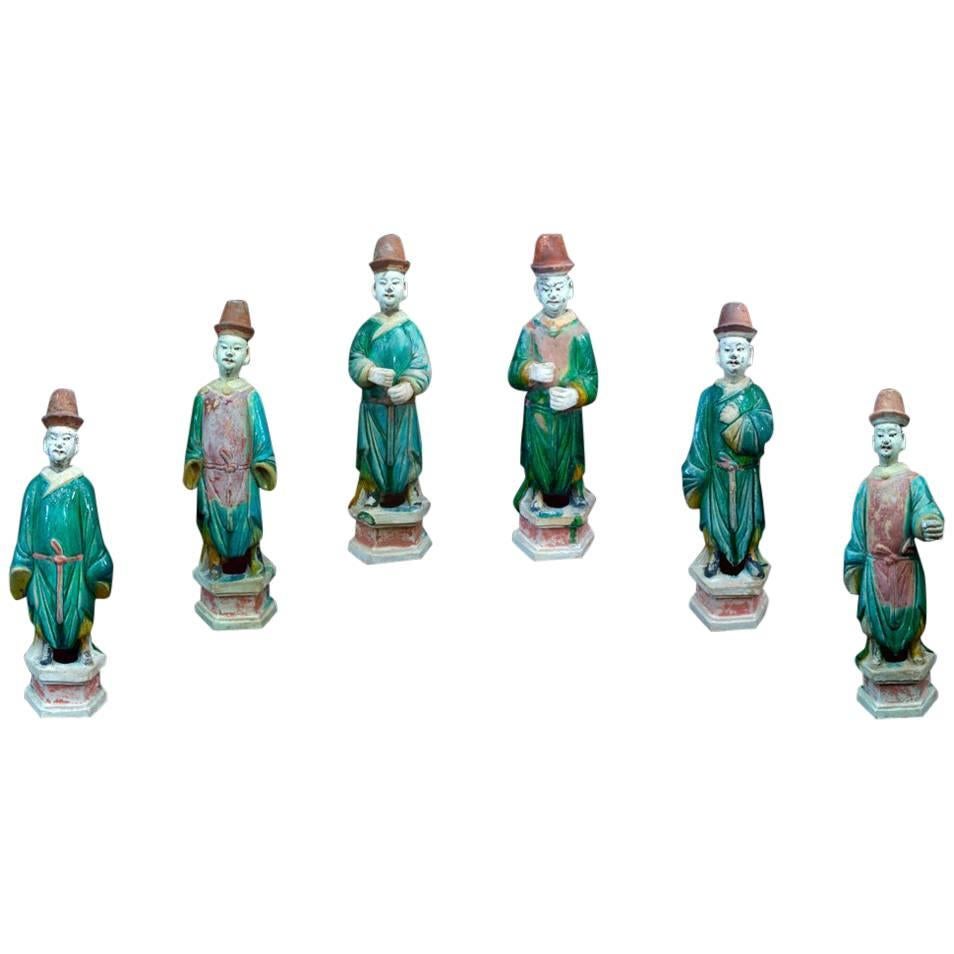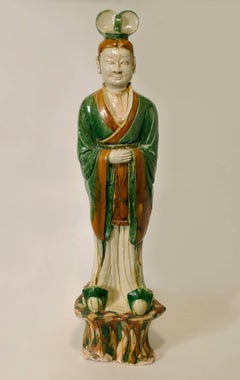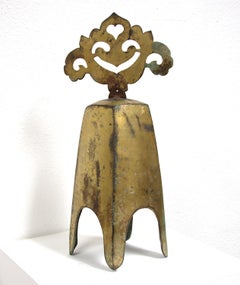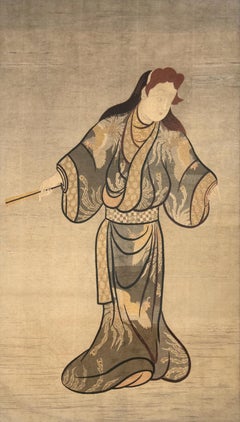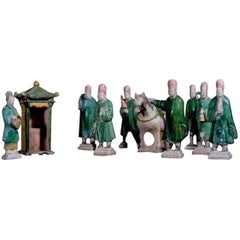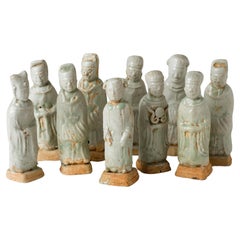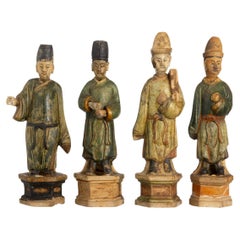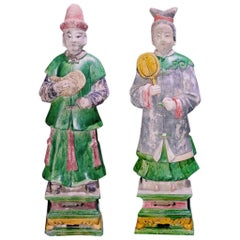Items Similar to Procession, China, Ming Dynasty
Video Loading
Want more images or videos?
Request additional images or videos from the seller
1 of 7
UnknownProcession, China, Ming DynastyMing Dynasty
Ming Dynasty
$19,000
£14,508.04
€16,517.92
CA$26,678.99
A$29,165.37
CHF 15,429.79
MX$349,010.52
NOK 196,321.96
SEK 179,712.89
DKK 123,378.66
About the Item
A set of figurative sculptures, ceramic in greens and browns by an unknown Chinese artist. The piece is from the Ming Dynasty and is unsigned.
- Creation Year:Ming Dynasty
- Dimensions:Height: 19 in (48.26 cm)Width: 36 in (91.44 cm)Depth: 12 in (30.48 cm)
- Medium:
- Movement & Style:
- Period:
- Condition:
- Gallery Location:Palm Desert, CA
- Reference Number:Seller: 7677.b1stDibs: LU939606432
About the Seller
4.8
Recognized Seller
These prestigious sellers are industry leaders and represent the highest echelon for item quality and design.
Established in 1996
1stDibs seller since 2011
115 sales on 1stDibs
Typical response time: 1 hour
- ShippingRetrieving quote...Shipping from: Palm Desert, CA
- Return Policy
More From This Seller
View AllSancai-Glazed Official
Located in Palm Desert, CA
A Sancai, tri color glazed pottery figure of a Tang Dynasty official. Tang Dynasty (618-907 AD).
Category
15th Century and Earlier Other Art Style Figurative Sculptures
Materials
Ceramic
Procession Ornament
Located in Palm Desert, CA
A Chinese Procession Ornament dating from the Liao Dynasty, from 907 to 1125 AD. The Liao Dynasty, also known as the Khitan Empire, was an empire in northern China that ruled over the regions of Manchuria, Mongolia, and parts of northern China proper. It was founded by the Yelu family of the Khitan people in the final years of the Tang Dynasty, even though its first ruler, Yelu Abaoji, did not declare an era name until 916. The Liao Empire was destroyed by the Jurchen of the Jin Dynasty in 1125. However, remnants of its people led by Yelu Dashi established the Xi (or Western) Liao Dynasty 1125 - 1220, also known as Kara - Khitan Khanate, which survived until the arrival of Genghis Khan...
Category
15th Century and Earlier Sculptures
Materials
Bronze
Figure of a Beauty, Japan, Edo Period
Located in Palm Desert, CA
A Japanese embroidery from the Edo Period. “Figure of a Beauty” is a portrait embroidery, silk and gold thread in golds and grays.
Provenance:
Priv...
Category
18th Century Edo More Art
Materials
Silk
Sancai-Glazed Horse with Cut Fur Blanket
Located in Palm Desert, CA
A Chinese, Tang Dynasty, Sancai-glazed, three colors of brown, green and creamy, sculpture of a horse with a cut fur blanket. This Chinese, Tang Dynasty (618-907 AD), glazed earthenw...
Category
15th Century and Earlier Figurative Sculptures
Materials
Earthenware, Glaze
Gandharan Frieze with Scenes from the Life of Buddha
Located in Palm Desert, CA
A schist stone carving from 2nd/3rd Century Gandhara depicting scenes from the life of Buddha.
Provenance:
Spink and Sons LTD, 1985.
Category
15th Century and Earlier Other Art Style Figurative Sculptures
Materials
Stone
Sancai-Glazed Earth Spirit
Located in Palm Desert, CA
A Chinese, Sancai glazed pottery earth spirit. Tang Dynasty.
Category
15th Century and Earlier Other Art Style Sculptures
Materials
Clay
You May Also Like
Impressive Terracotta Funerary Procession - Ming Dynasty, China '1368-1644 AD'
Located in San Pedro Garza Garcia, Nuevo Leon
Impressive Funeral Ensamble of 10 Terracotta Glazed Figures in green and caramel colors depicting a votive procession with a palanquin, his four carriers, a horse, a stableman, two musicians, and an offering carrier.
This ensemble is accompanied by a Certificate of Authenticity, and Certificate of Expertise by Jean-Yves Nathan - Specialist in Asian Arts for the CEDEA (The European Confederation of Art Experts).
Burial figurines of graceful dancers, mystical beasts, and everyday objects reveal both how people in early China approached death and how they lived. Since people viewed the afterlife as an extension of worldly life, these figurines, called mingqi, sometimes referred as “spirit utensils” or “vessels of ghosts” disclose details of routine existence and provide insights into belief systems over a thousand-year period.
The Ming dynasty was the ruling dynasty of China – then known as the Empire of the Great Ming – for 276 years (1368–1644 AD). Founded by Chu Yuan-chang, the rebel leader that was successful in removing the mongols from the throne. Chinese control was re-asserted in China and eastern Asia. Literature became more important, schools were created, and the justice system was reformed. The Ming dynasty is described by some as "one of the greatest eras of orderly government and social stability in human history,” was the last imperial dynasty in China ruled by ethnic Han Chinese.
The practice of burying ceramic objects with the deceased went into decline from the 10th to the 14th Century AD. There was a revival in placing miniature representations of glazed terracotta objects such a furniture, food offerings, horses, miniature statues...
Category
Antique 15th Century and Earlier Chinese Ming Antiquities
Materials
Terracotta
Ten Qingbai Figures of Courtiers, Five Dynasties-Song Dynasty
Located in seoul, KR
This work is a group of Qingbai (青白磁) porcelain figurines produced during the Five Dynasties to the Northern or Southern Song period (10th–13th century). A transparent glaze is appli...
Category
Antique 15th Century and Earlier East Asian Antiquities
Materials
Porcelain
Ming Dunasty - Four Procedural Figures
Located in Porto, PT
These remarkable Chinese sculptures, dating from the Ming dynasty, are crafted in glazed terracotta and showcase the exquisite artistry and ceremonial elegance of the period. Each fi...
Category
Antique 15th Century and Earlier Ceramics
Materials
Ceramic
Magnificent Court Attendants in Terracotta - Ming Dynasty, China 1368-1644 AD TL
Located in San Pedro Garza Garcia, Nuevo Leon
A magnificent pair of male and female courtiers from the Ming Dynasty (1368-1644 CE) in excellent condition. They are wearing traditional Daopao robes in green and black garments wit...
Category
Antique 15th Century and Earlier Chinese Ming Antiquities
Materials
Terracotta
Tall Ming Dynasty Sancai Glazed Dignitary Tomb Figures
Located in Dallas, TX
A Pair of Chinese Enameled Sancai Glazed Pottery Attendant Figures Representing Dignitaries.
Ming Dynasty Period. Circa 1600AD
Dimensions; 23 x 5.5 x 5.25 inches (58.4 x 13.7 x 13.3 ...
Category
Antique 16th Century Chinese Ming Figurative Sculptures
Materials
Pottery
6 Elegant Ming Dynasty Court Attendants in Glazed Terracotta, China 1368-1644 AD
Located in San Pedro Garza Garcia, Nuevo Leon
A fine set of a six court attendants as in the Forbidden City of Beijing, elegantly dressed in a Green & Red Daopao – a traditional men’s formal attire from the Ming Dynasty dated 1368-1643 A.D. – with glazed robes and Red Pigment remains in their hat and belts. They stand in an honorary posture atop a red plinth, some with orifices in their hands, where spirit objects were placed to comfort or satisfy the deceased. The heads are detachable, as often seen on the larger figures from this period.
They are accompanied by a Certificate of Authenticity, and Certificate of Expertise by Jean-Yves Nathan - a leading authority specialized in Far East Archaeology from the CEDEA (The European Confederation of Art Experts).
Burial figurines of graceful dancers, mystical beasts, and everyday objects reveal both how people in early China approached death and how they lived. Since people viewed the afterlife as an extension of worldly life, these figurines, called mingqi, sometimes referred as “spirit utensils” or “vessels of ghosts” disclose details of routine existence and provide insights into belief systems over a thousand-year period.
The Ming dynasty was the ruling dynasty of China – then known as the Empire of the Great Ming – for 276 years (1368–1644 AD). Founded by Chu Yuan-chang, the rebel leader that was successful in removing the mongols from the throne. Chinese control was re-asserted in China and eastern Asia. Literature became more important, schools were created, and the justice system was reformed. The Ming dynasty is described by some as "one of the greatest eras of orderly government and social stability in human history,” was the last imperial dynasty in China ruled by ethnic Han Chinese.
The practice of burying ceramic objects with the deceased went into decline from the 10th to the 14th Century AD. There was a revival in placing miniature representations of glazed terracotta objects such a furniture, food offerings, horses, miniature statues...
Category
Antique 15th Century and Earlier Chinese Ming Antiquities
Materials
Terracotta
More Ways To Browse
Ming Dynasty
Antique Ming Dynasty
Chinese Ming Dynasty
Ming Dynasty Art
Ming Dynasty Sculpture
Chinese Procession
Ming Dynasty Procession
J J Big Floor Light
J Steele
James Scoppettone
James Walter Gozzard
James Webb Oil Paintings
Jan Asselijn
Jane Hill
Japanese Erotic Print
Japanese Oil Painting Signed
Jean Pal Posters
Jesus Last Supper
